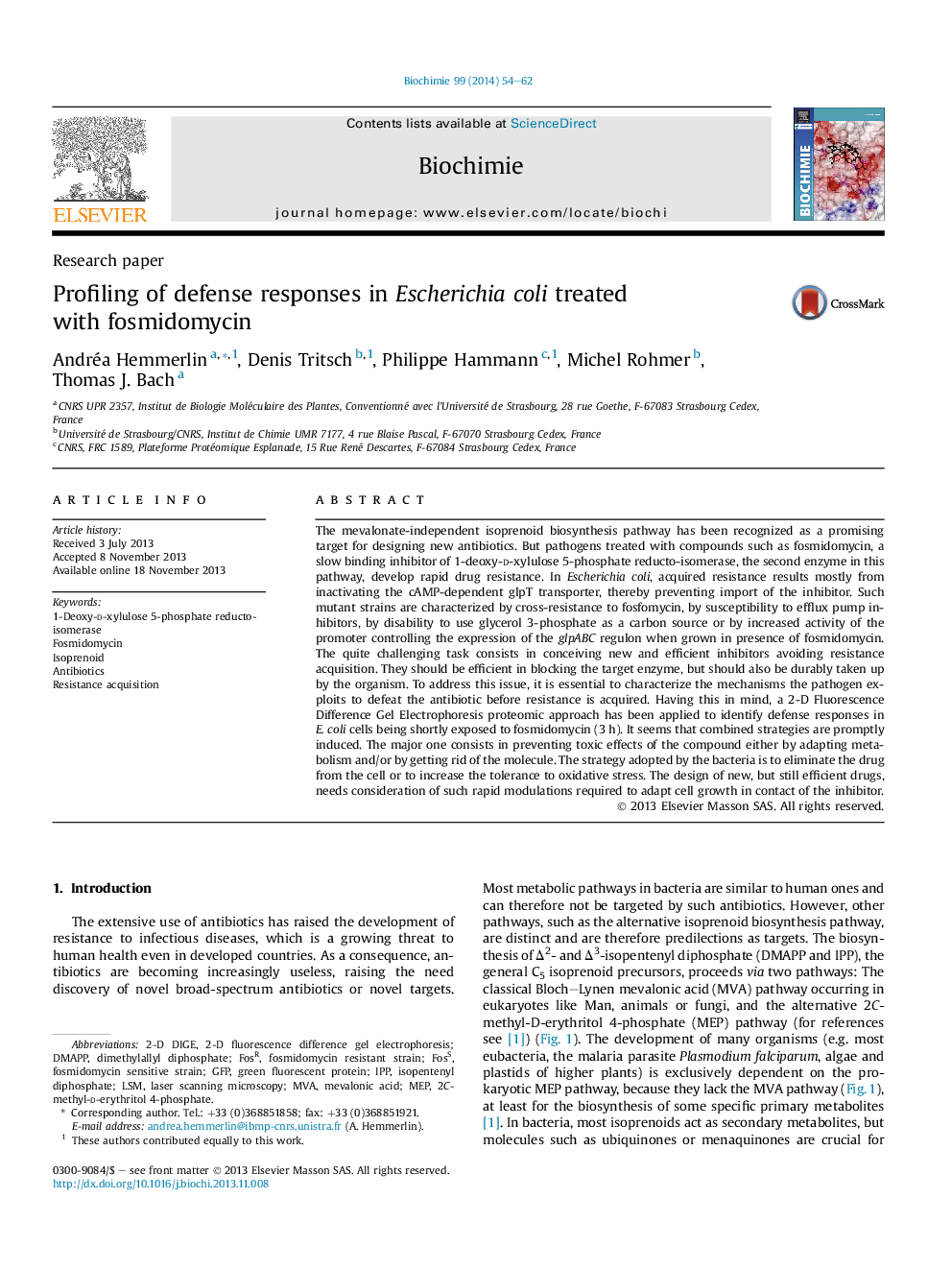| کد مقاله | کد نشریه | سال انتشار | مقاله انگلیسی | نسخه تمام متن |
|---|---|---|---|---|
| 8305632 | 1538431 | 2014 | 9 صفحه PDF | دانلود رایگان |
عنوان انگلیسی مقاله ISI
Profiling of defense responses in Escherichia coli treated with fosmidomycin
دانلود مقاله + سفارش ترجمه
دانلود مقاله ISI انگلیسی
رایگان برای ایرانیان
کلمات کلیدی
GFP1-deoxy-d-xylulose 5-phosphate reducto-isomeraseFOSSIPPMEPDMAPP2-D DIGE - DIGE 2DAntibiotics - آنتی بیوتیک هاMevalonic acid - اسید MevalonicIsoprenoid - ایسپرونیدisopentenyl diphosphate - ایسپنتنیل دی فسفاتdimethylallyl diphosphate - دی متیللید دی فسفاتLSM - سازمان غیر دولتیFosmidomycin - فسودمیومایسینMVA - مالیات بر ارزش افزودهLaser scanning microscopy - میکروسکوپ اسکن لیزرgreen fluorescent protein - پروتئین فلورسنت سبز
موضوعات مرتبط
علوم زیستی و بیوفناوری
بیوشیمی، ژنتیک و زیست شناسی مولکولی
زیست شیمی
پیش نمایش صفحه اول مقاله

چکیده انگلیسی
The mevalonate-independent isoprenoid biosynthesis pathway has been recognized as a promising target for designing new antibiotics. But pathogens treated with compounds such as fosmidomycin, a slow binding inhibitor of 1-deoxy-d-xylulose 5-phosphate reducto-isomerase, the second enzyme in this pathway, develop rapid drug resistance. In Escherichia coli, acquired resistance results mostly from inactivating the cAMP-dependent glpT transporter, thereby preventing import of the inhibitor. Such mutant strains are characterized by cross-resistance to fosfomycin, by susceptibility to efflux pump inhibitors, by disability to use glycerol 3-phosphate as a carbon source or by increased activity of the promoter controlling the expression of the glpABC regulon when grown in presence of fosmidomycin. The quite challenging task consists in conceiving new and efficient inhibitors avoiding resistance acquisition. They should be efficient in blocking the target enzyme, but should also be durably taken up by the organism. To address this issue, it is essential to characterize the mechanisms the pathogen exploits to defeat the antibiotic before resistance is acquired. Having this in mind, a 2-D Fluorescence Difference Gel Electrophoresis proteomic approach has been applied to identify defense responses in E. coli cells being shortly exposed to fosmidomycin (3 h). It seems that combined strategies are promptly induced. The major one consists in preventing toxic effects of the compound either by adapting metabolism and/or by getting rid of the molecule. The strategy adopted by the bacteria is to eliminate the drug from the cell or to increase the tolerance to oxidative stress. The design of new, but still efficient drugs, needs consideration of such rapid modulations required to adapt cell growth in contact of the inhibitor.
ناشر
Database: Elsevier - ScienceDirect (ساینس دایرکت)
Journal: Biochimie - Volume 99, April 2014, Pages 54-62
Journal: Biochimie - Volume 99, April 2014, Pages 54-62
نویسندگان
Andréa Hemmerlin, Denis Tritsch, Philippe Hammann, Michel Rohmer, Thomas J. Bach,